Ben King boasts more than 10 years of involvement in the visual effects industry. Before becoming part of the team at Herne Hill Media in 2021, he lent his talents to various studios like Mr. X and DNEG. His portfolio boasts a range of notable shows such as The Shape of Water, Hellboy, Jungle Cruise, and Ghostbusters: Afterlife.
What is your background?
I have been working in the VFX industry for over ten years, but before that, I started my career in games. My focus for most of my career has been lighting, however I have also worked in many other parts of the VFX process well.
How did you and Herne Hill get involved on this movie?
Sharina Radia, the VFX Executive at 20th Century Studios, brought the project to our attention. She thought we could be a good fit based on the artist profile within our studio and the type of VFX requirements involved with it.
How was the collaboration with director Arkasha Stevenson and VFX Supervisor James Cooper?
James and Arkasha Stevenson (the Director) worked very closely together to find the best balance between practical and digital possible. A major effort was made to keep as much of the work practical as possible and augment digitally where necessary.
How did you organize the work with your VFX Producer?
We had an amazing internal producer, Adam Quattrociocchi. Adam and I shared an office so that made collaboration and communication extremely easy. We had the luxury of working with a small but exceptionally talented team, so we were able to keep the tasking simple. As usual communication was the most important part of organizing the work. We prioritized communicating the notes to the artists and making sure they understood the shot’s direction before any work was started.

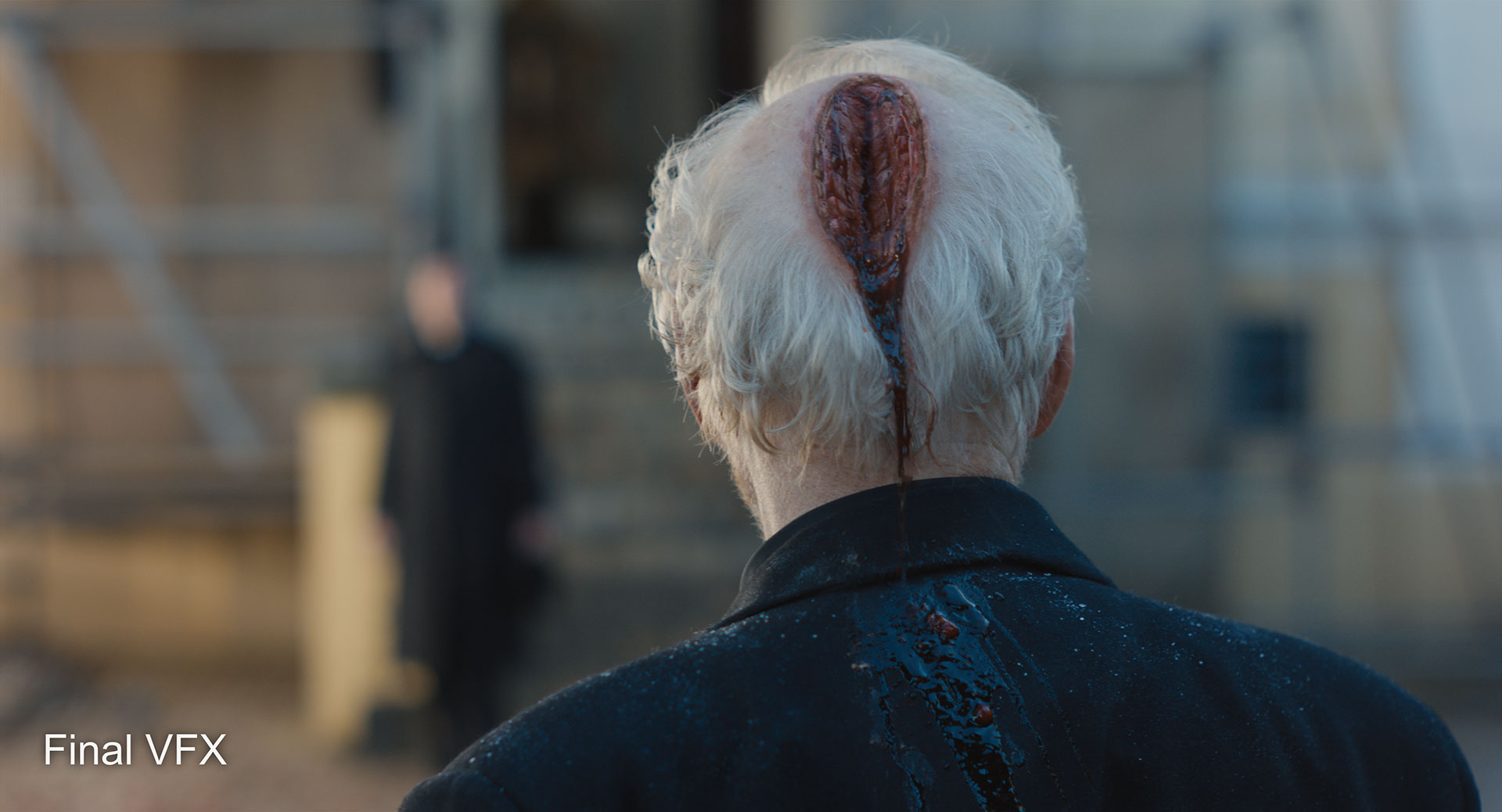
What were the sequences made by Herne Hill?
Herne Hill did work throughout the whole film however the largest sequences were the airport sequence, the Anjelica hanging sequence, and Jackal sequence at the end of the film.
Could you walk us through the creative process behind designing and animating the terrifying jackal creature?
Originally, the creature started as a practical suit; however, at some point in production, the director decided the creature needed to be more animalistic. At that point, we were provided with a rough sketch, and we used that, along with a lot of references to create a digital sculpture in Zbrush. This model went through several variations until we landed on the final design the director was happy with. The design was fleshed out by one of our amazing creature artists Nikita Lebedev. Particular attention was paid to the creature’s posture and a very prominent hump on its back. The jackal was supposed to be a pathetic and sympathetic creature as much as it was supposed to be terrifying.
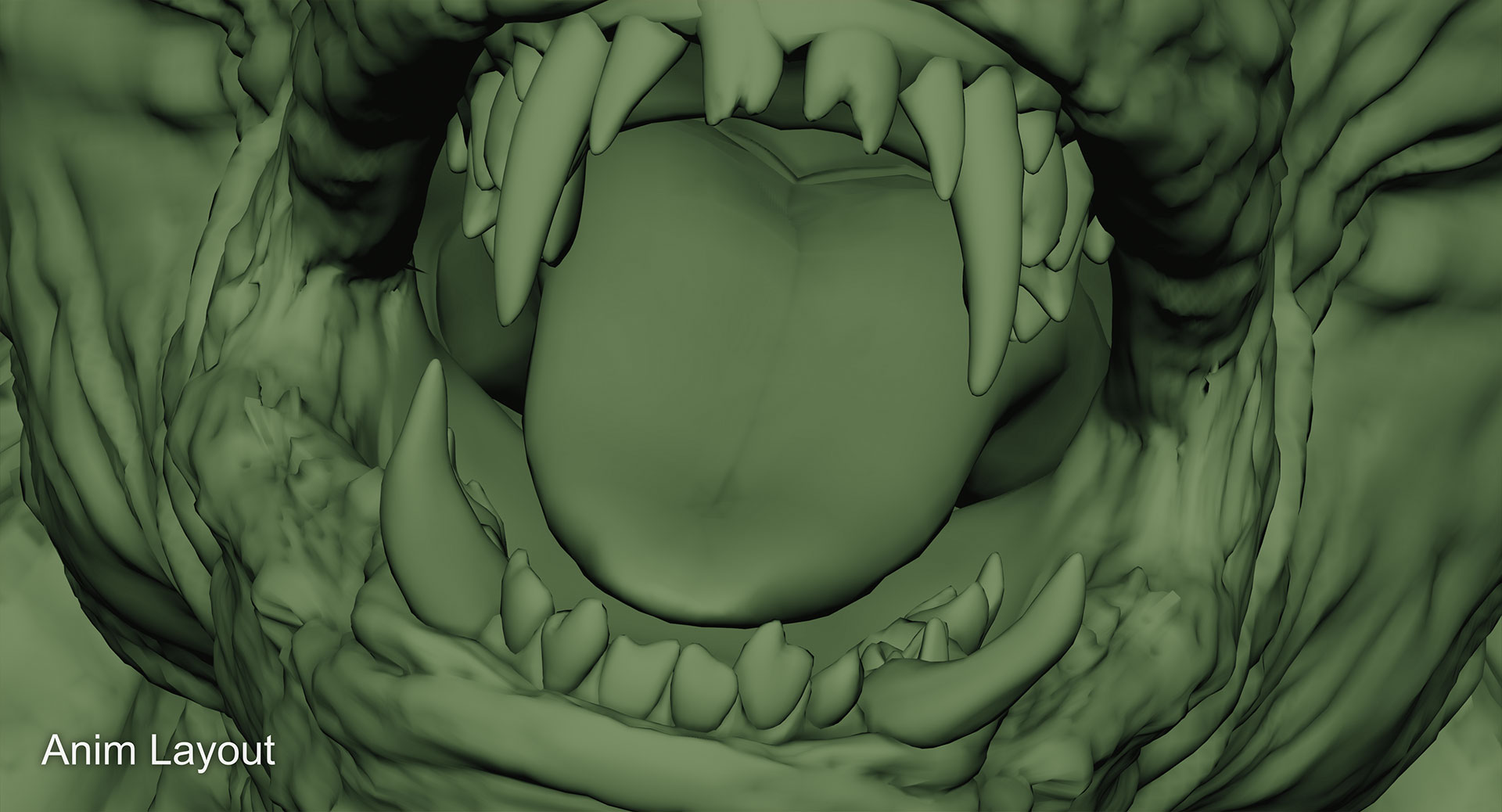
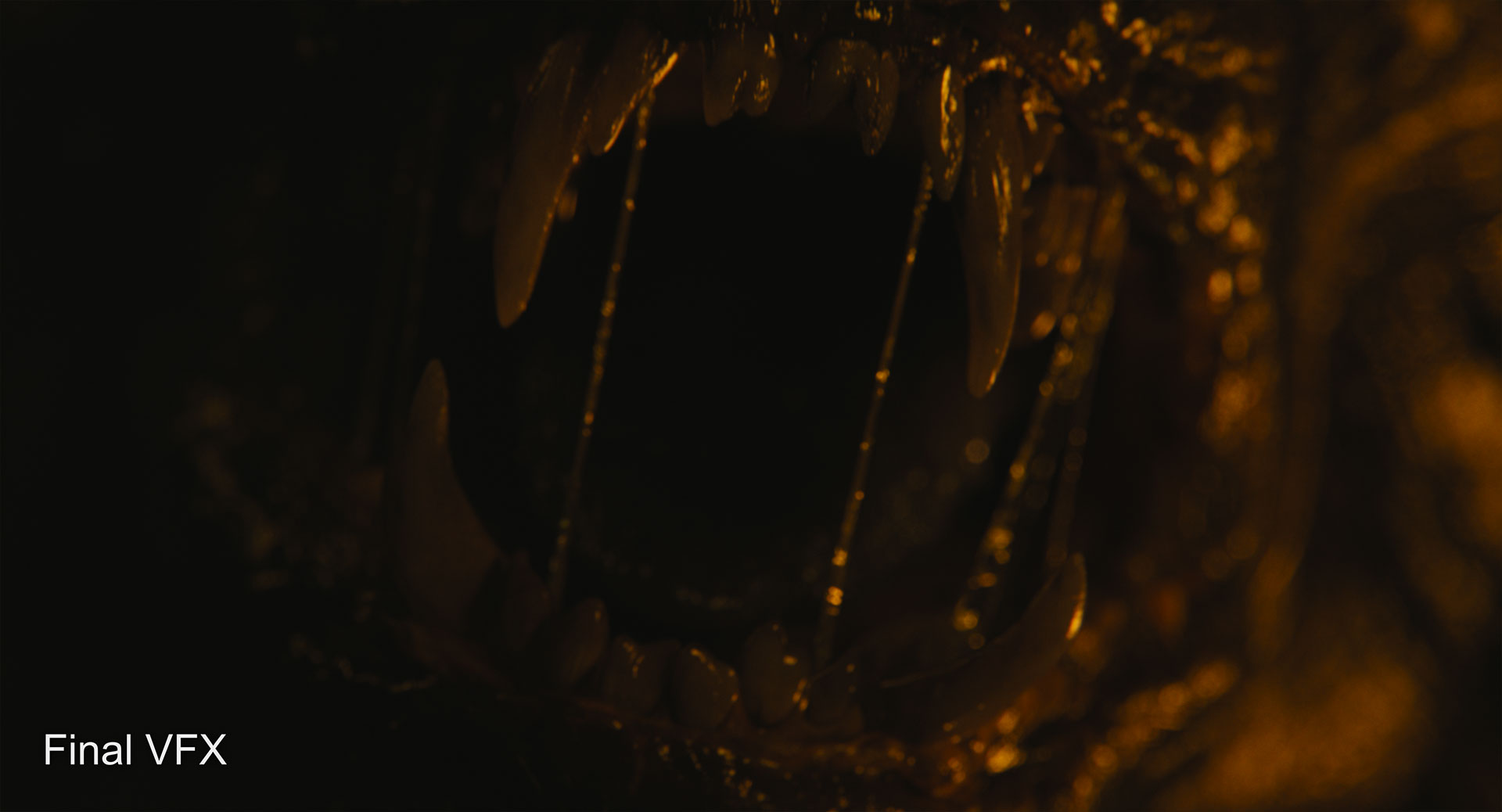
What were the primary inspirations or references utilized in the development of the jackal’s appearance and movements?
We used references of many different animals especially for the details related to how matted the fur was and how much dirt and mange the creature had.
How did the animation team approach the challenge of making the jackal both frightening and believable?
As usual we started by using as many references as possible. A lot of the reference came from the animators performing the action themselves and then using that as a base for the performance.
Were there any particular technical or artistic hurdles encountered during the creation and animation of the jackal, and if so, how were they overcome?
The main challenge was that the jackal sequence was in slow motion. That provided the challenge of keeping the audience interested while grounding the performance.
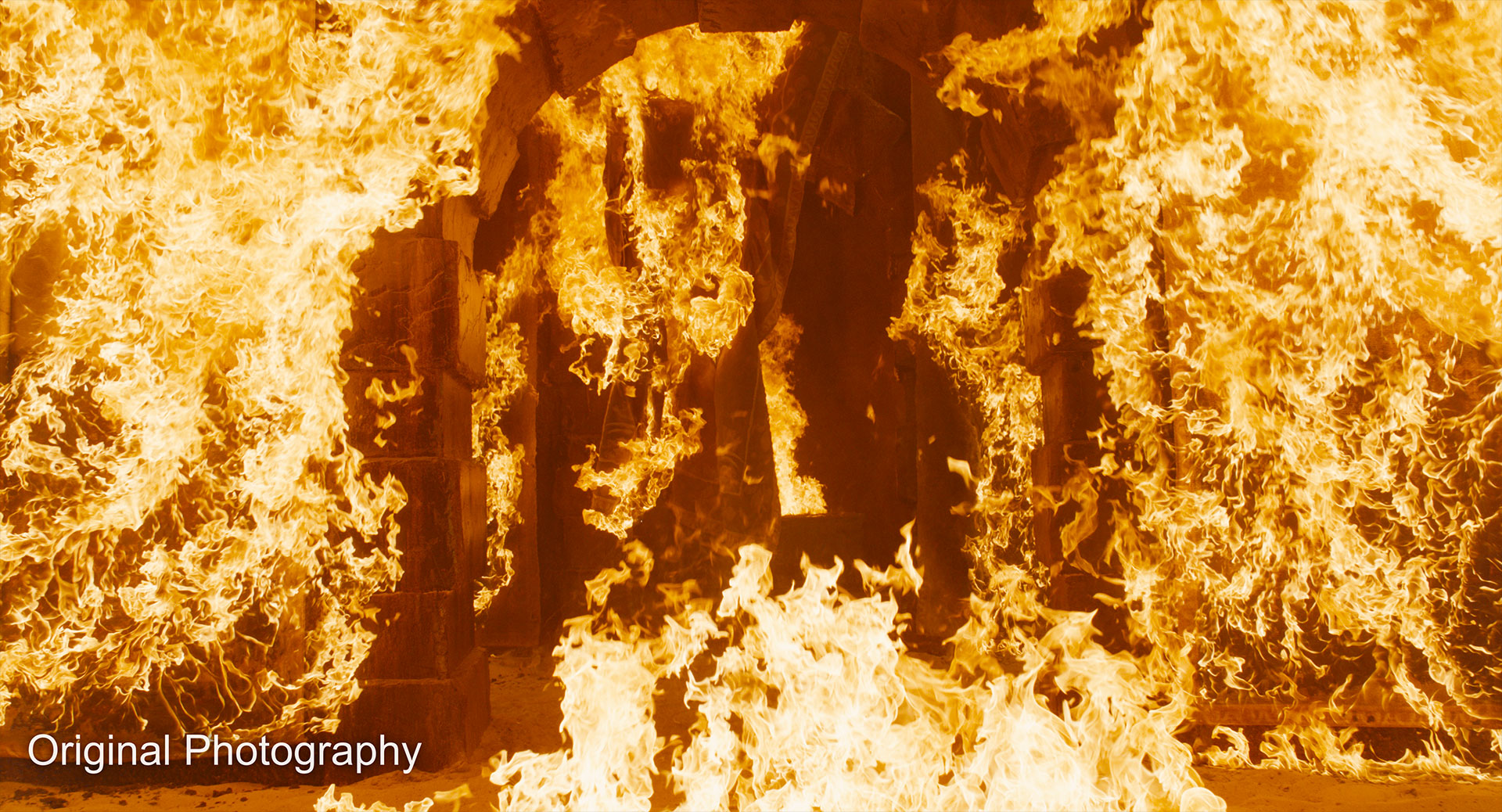
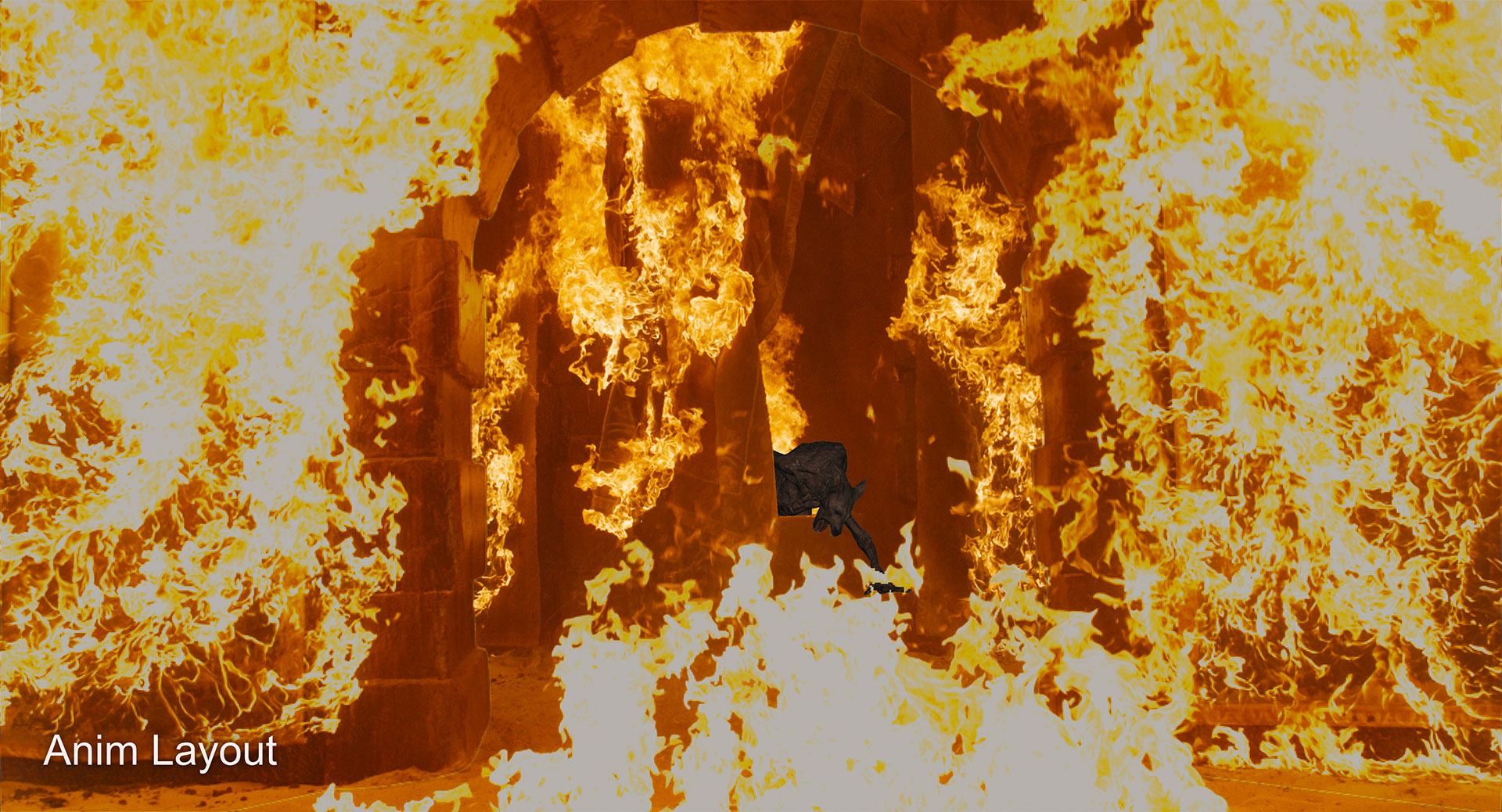

Can you discuss the collaboration between the animation team and other departments, such as the director and special effects team, in bringing the jackal to life on screen?
The director was extremely specific about what she wanted, and we often had a performance from an actor on set in a grey suit. In this case we tried to maintain the actor’s performance as much as possible.
Could you provide insights into the creative process behind incorporating real fire with the CG fire?
CG fire is one of the hardest effects to create believably. We used every trick in the book to accomplish this. Practical fire was shot where possible, and we augmented the fire with a digital simulation and then composited in various elements to ground the effect in reality.
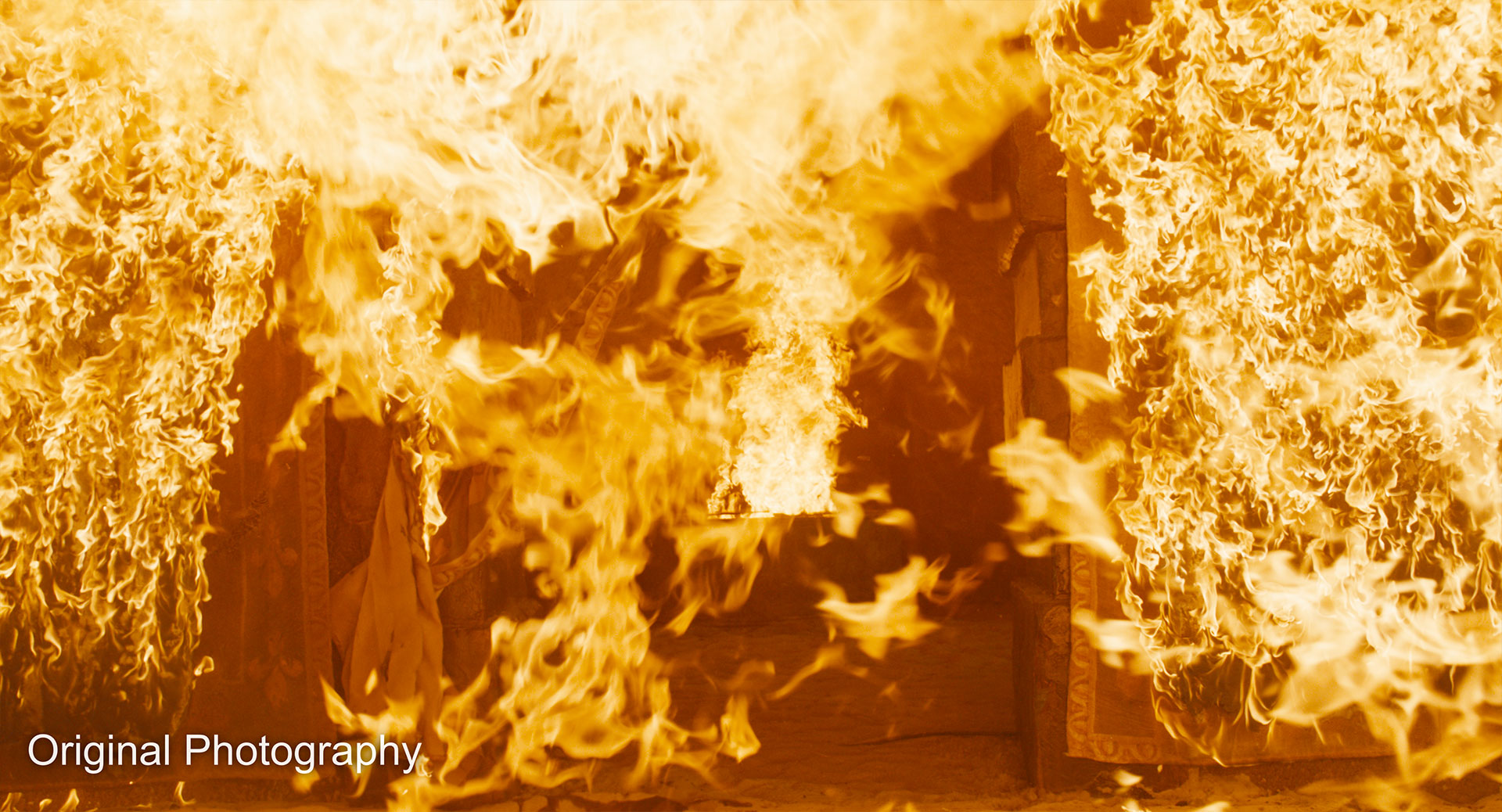
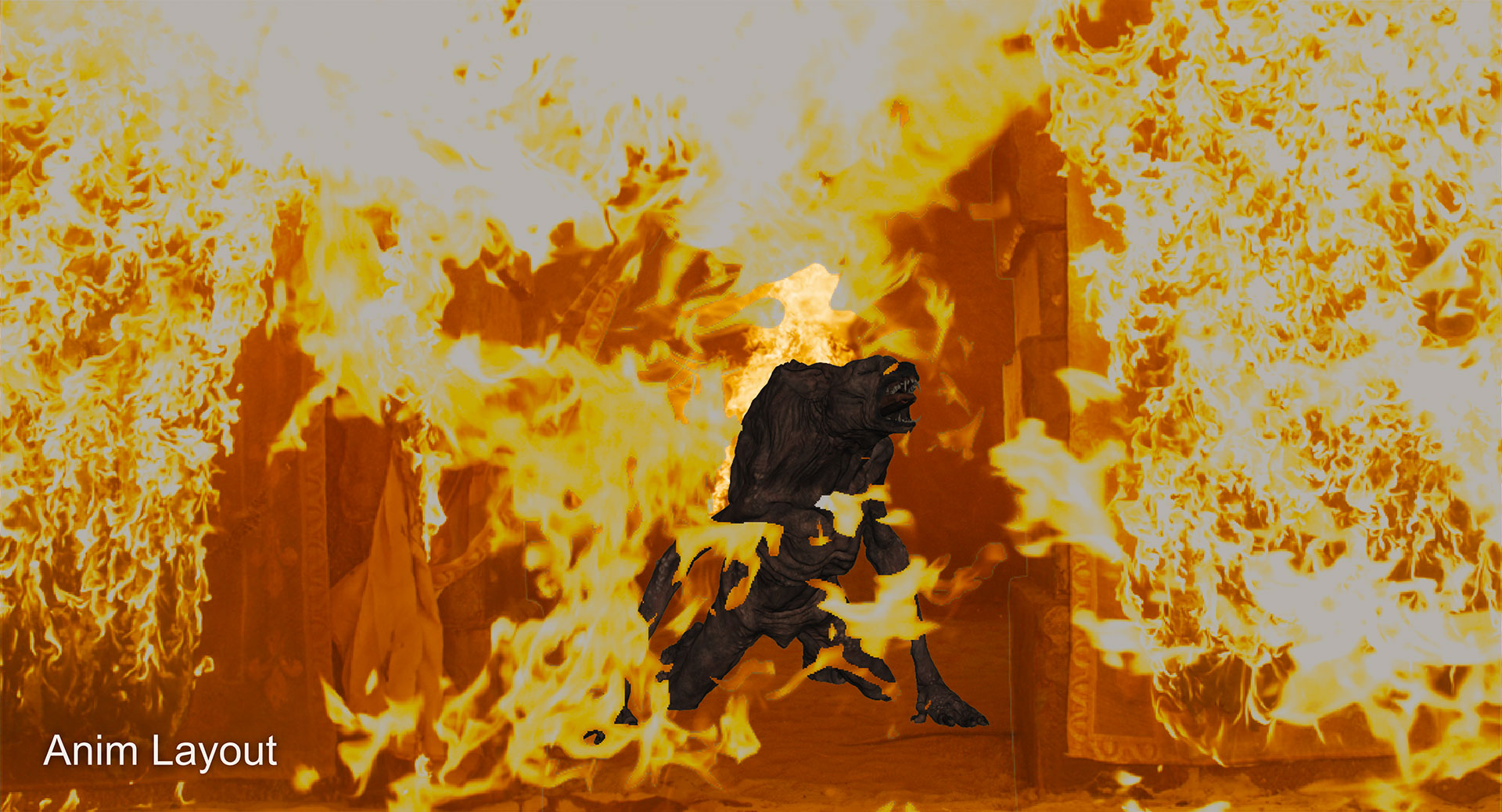
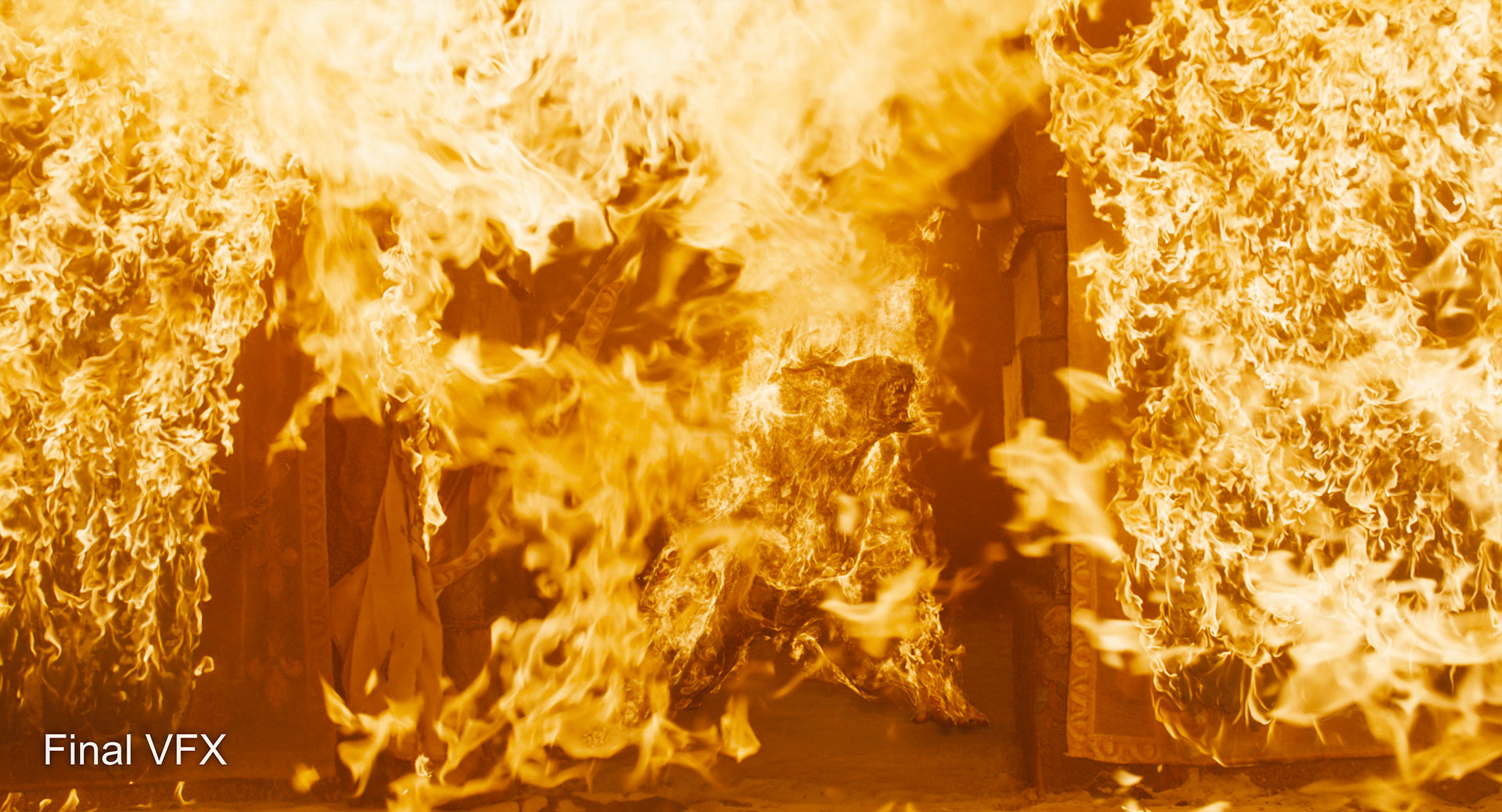
What were the main challenges with the fire sequences?
Several of the fire shots were in slow motion so that provided a challenge for our FX team since there is nowhere to hide. The audience really has time to look at the effect so that raises the bar for how realistic the simulation had to be.
Could you elaborate on the process of creating invisible visual effects, specifically in regard to crowd creation and set extension?
In the airport sequence we need to augment the extras that were shot with a lot more cars and people. We created digital crowd models and cars with as much variation as possible. We then did several motion capture sessions to make sure we had sufficient variation for performance.
In the end, we felt like we achieved a high level of believability, and hopefully the audience did not notice there were any digital elements in the shots.
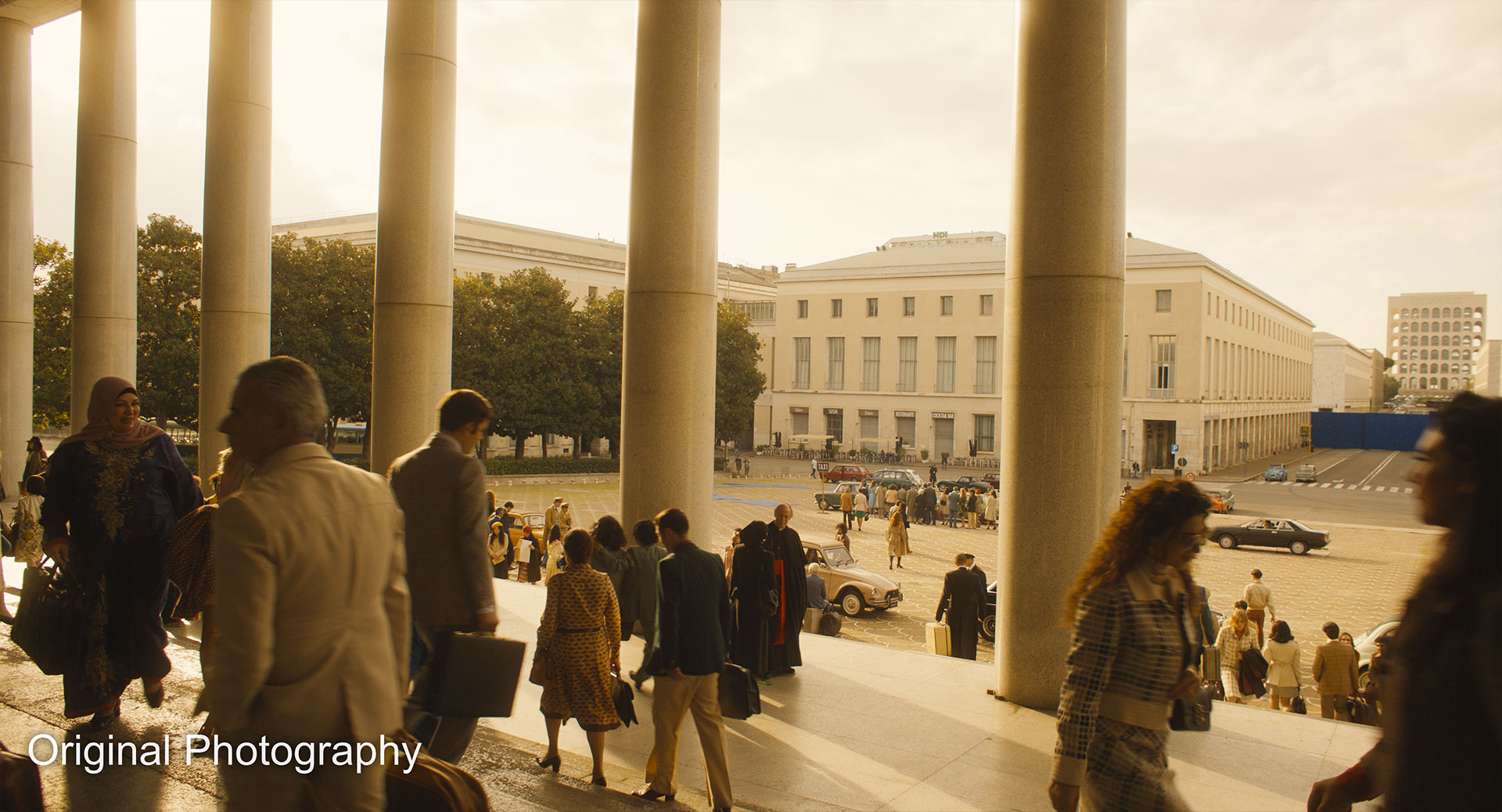
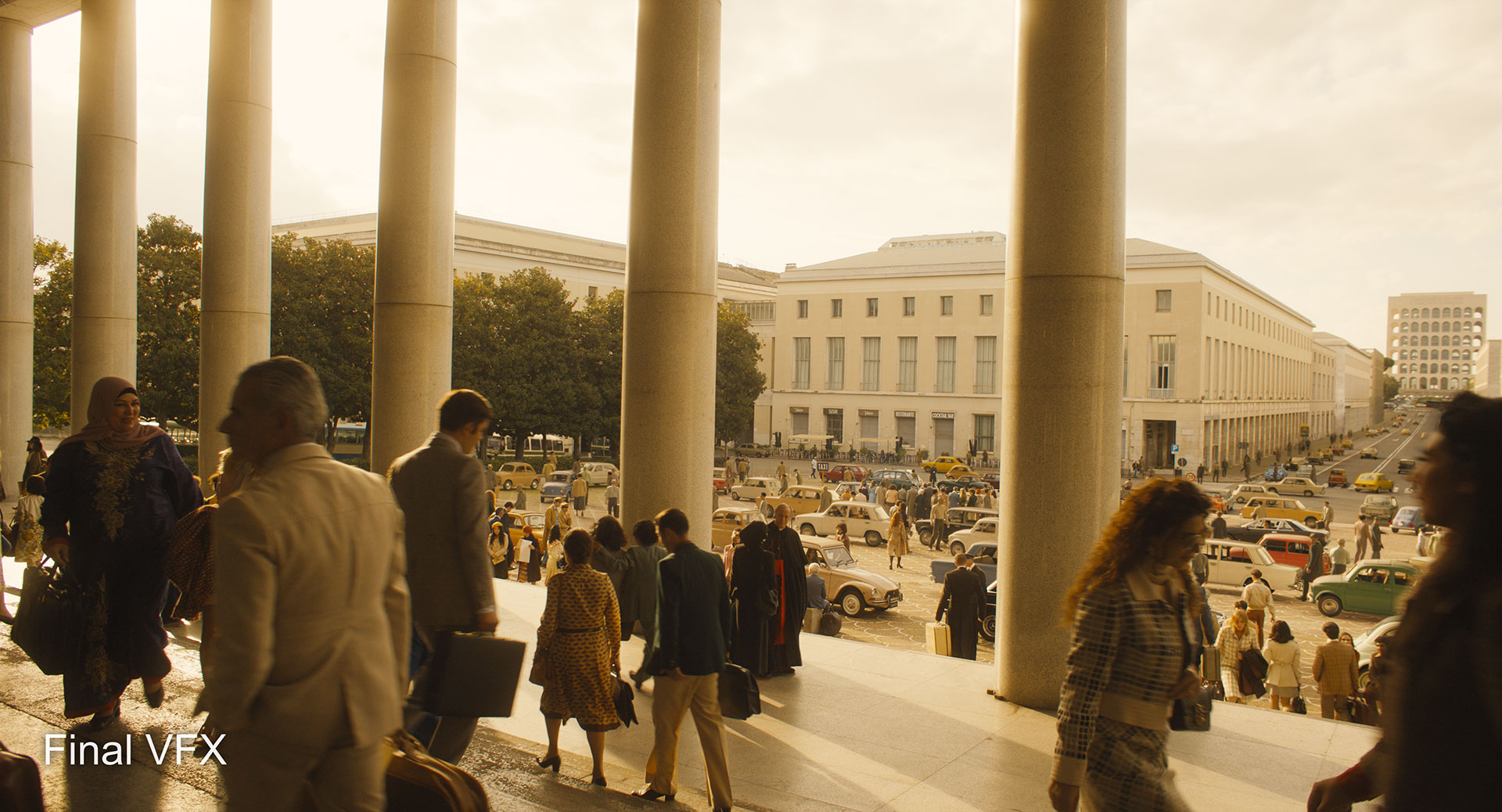
What challenges did your team face when seamlessly integrating crowd elements and extending the film’s environment digitally, and how did you overcome them?
The biggest challenge was compositing the digital crowd in with the practical photography. We had to do a ton or roto and layers to make sure everything integrated seamlessly.
Can you discuss any innovative techniques or technologies utilized in the creation of invisible visual effects for crowd scenes and set extensions?
This was the first show we used Houdini crowd system for our simulations. It gave us a lot of flexibility and allowed us to iterate very quickly.
Can you discuss any specific scenes where visual effects were particularly challenging or innovative?
In the sequence where sister Anjelica hangs herself, we had to build a very complex fire simulation setup that would work for multiple shots. We then had to integrate this fire seamlessly with the practical fire that was shot on set. In shots where Anjelica was fully digital, we used different layers of cfx to simulate her robes as well as simulations on her limbs using ragdoll dynamics.
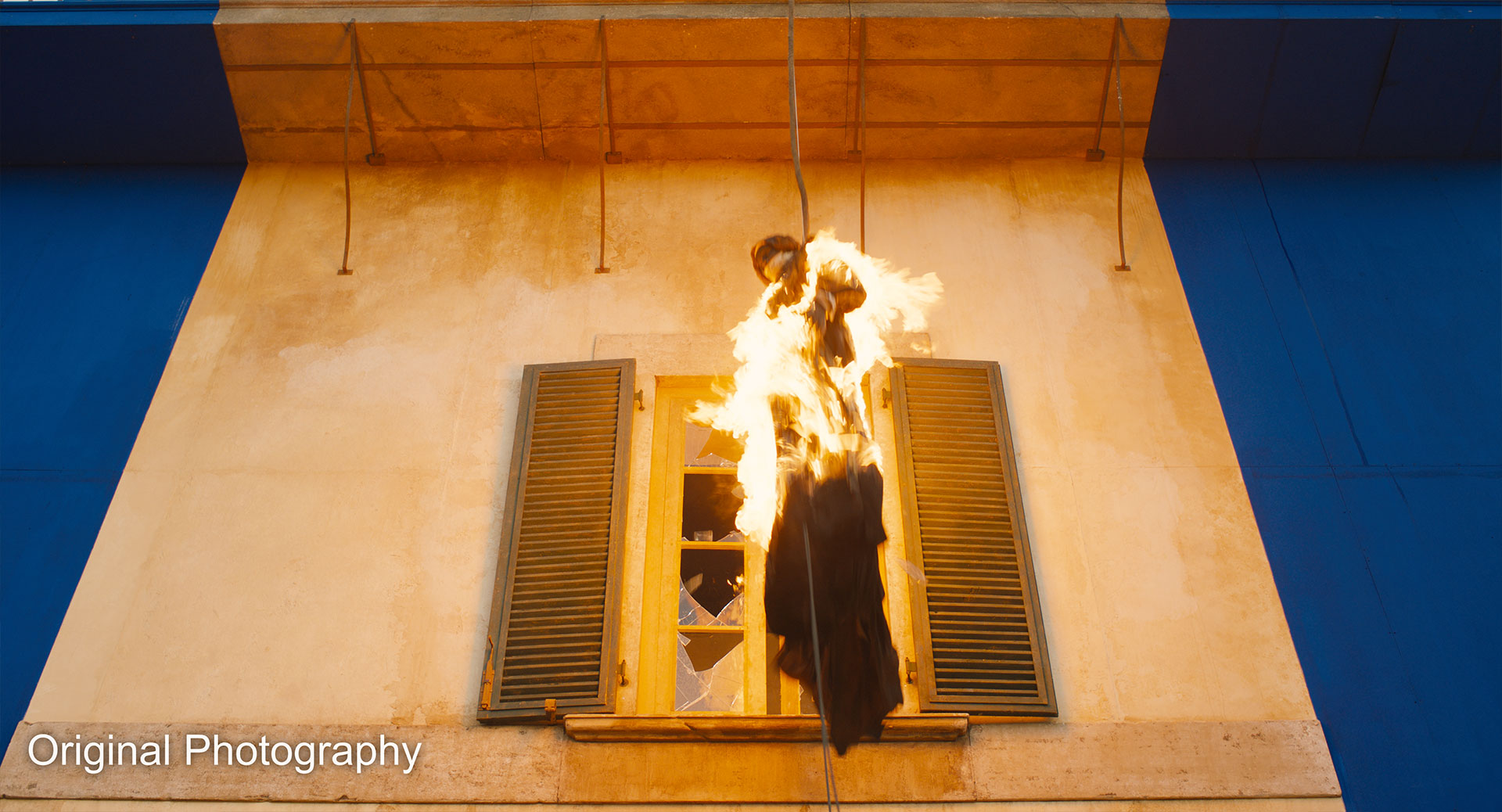
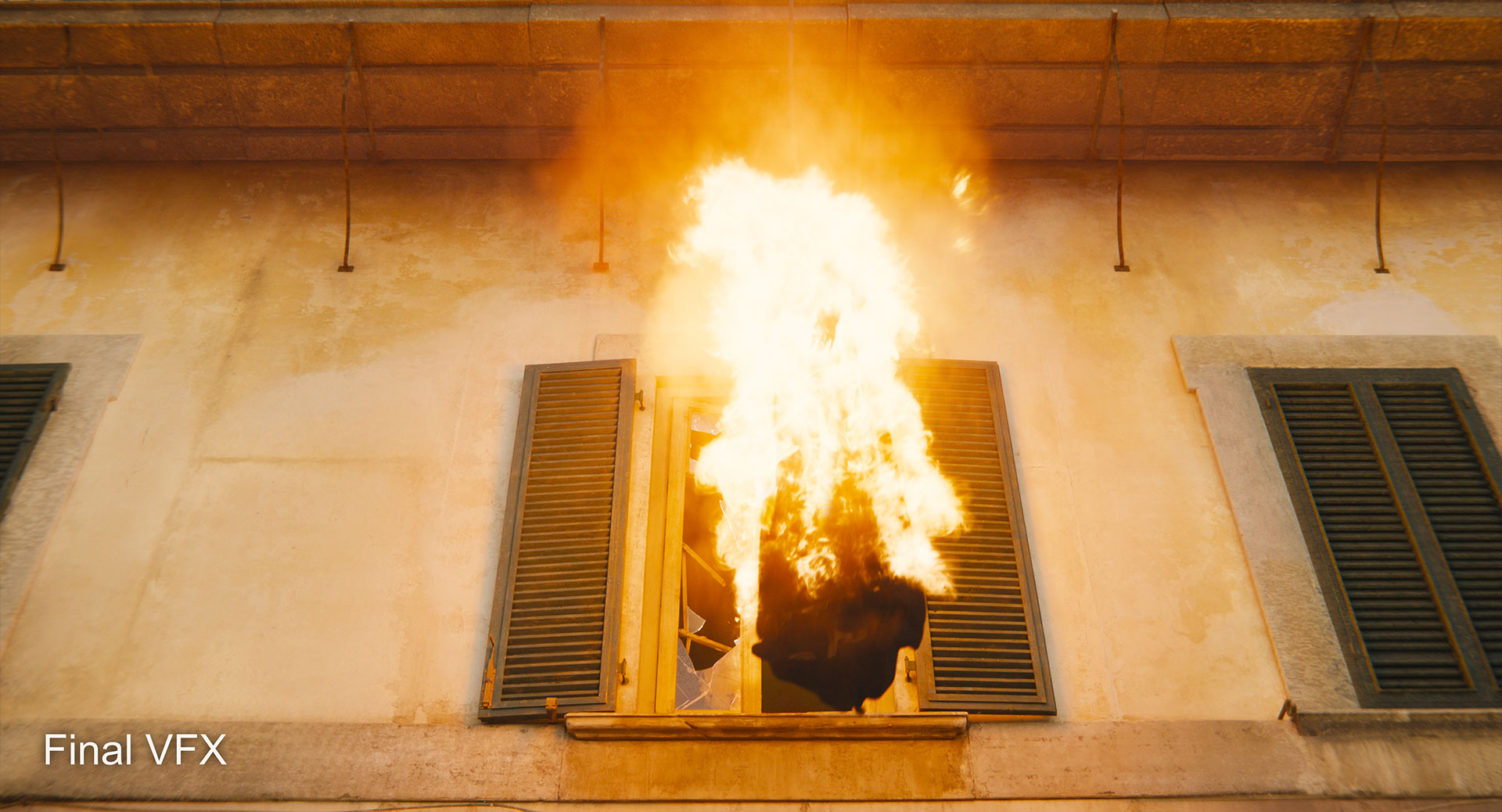
Looking back on the project, what aspects of the visual effects are you most proud of?
I am most proud of how seamlessly the effects integrate with practical photography. It’s always the goal to not have the audience notice that the work is digital, and I genuinely believe we were able to achieve that on this project.
Tricky question, what is your favorite shot or sequence?
My favorite shot is a flashback of the jackal’s mouth. It always reminds me of a similar shot in the movie Alien when I look at it. I was incredibly happy that we were able to make our CG model hold up that close to the camera.
What’s the VFX shots count?
Just under 200 shots in total.
What is your next project?
Unfortunately, I can’t share that just yet as we’re still in the process of finalizing our involvement, but it’s something that we’re all really excited about at Herne Hill.
What are the four movies that gave you the passion for cinema?
Alien, Star Wars, Jurassic Park and 2001: A Space Odyssey.
A big thanks for your time.
WANT TO KNOW MORE?
Herne Hill Media: Official website of Herne Hill Media.
Disney+: You can watch The First Omen on Disney+ (on May 30).
© Vincent Frei – The Art of VFX – 2024






